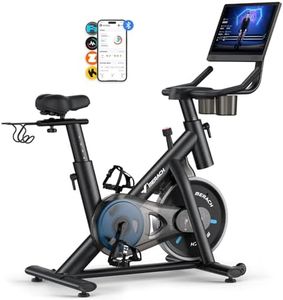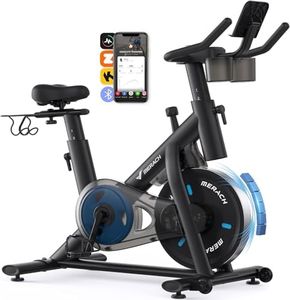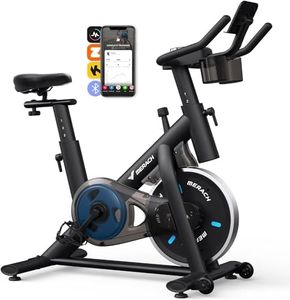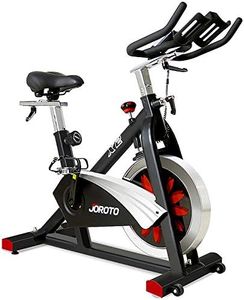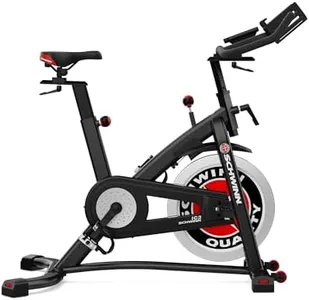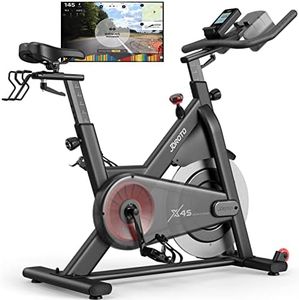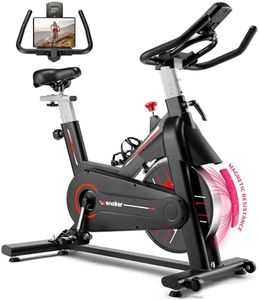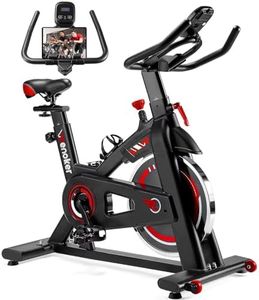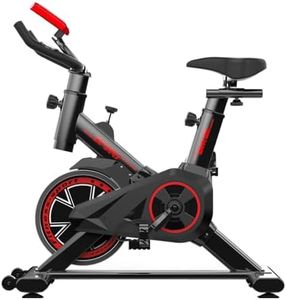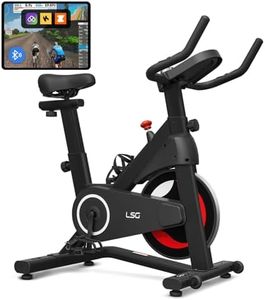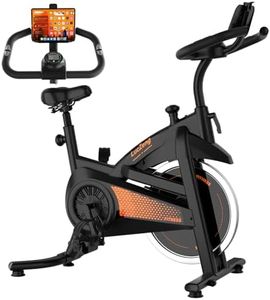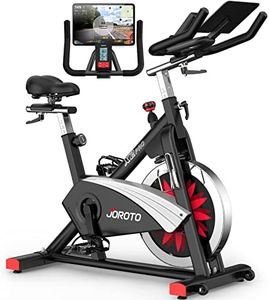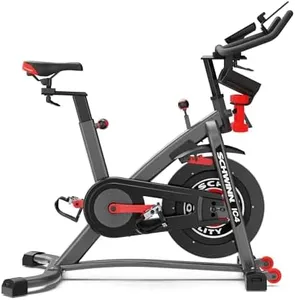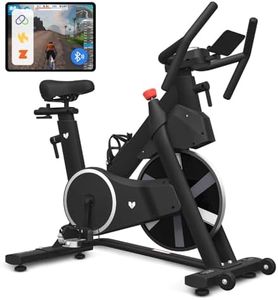We Use CookiesWe use cookies to enhance the security, performance,
functionality and for analytical and promotional activities. By continuing to browse this site you
are agreeing to our privacy policy
10 Best Spin Bike
From leading brands and best sellers available on the web.Buying Guide for the Best Spin Bike
Choosing the right spin bike can make your indoor cycling experience much more effective and enjoyable. The key is to consider your fitness goals, the space you have at home, and your personal comfort. By understanding the main features and specifications, you can select a spin bike that matches your needs, helps you stay motivated, and supports your fitness journey for the long term.Flywheel WeightThe flywheel is the heavy wheel at the front or back of the spin bike that helps simulate the feel of riding on the road. Its weight affects how smooth and stable your ride feels. Lighter flywheels (10-15kg) can make the bike easier to move and start pedaling, but might feel less stable during intense workouts. Medium-weight flywheels (16-20kg) balance smoothness and easier handling, suitable for most users. Heavier flywheels (over 20kg) provide the smoothest and most realistic cycling sensation, especially at higher resistances, but make the bike heavier and harder to move. Pick a flywheel weight based on your fitness level and whether you prefer lighter, easier movement or a more road-like, challenging ride.
Resistance SystemThe resistance system controls how hard it is to pedal. There are usually two types: friction and magnetic. Friction resistance uses pads that press against the flywheel, providing a wide range of resistance but may require more maintenance. Magnetic resistance uses magnets and is quieter, with smoother adjustments and almost no maintenance. For regular, intense workout sessions, magnetic resistance is often ideal, while those who prefer a classic feel and don’t mind occasional maintenance might like friction systems. Consider how important quietness and ease of maintenance are to you, as well as how often you’ll use the bike.
AdjustabilityThis refers to how much you can adjust the seat and handlebars—both up/down and fore/aft (forward/back). Higher adjustability ensures a better fit, which is critical for comfort and preventing injury. Some bikes offer simple up/down adjustments, while more advanced models allow you to adjust both up/down and front/back for seats and handlebars. If more than one person will use the bike or you’re particular about your riding posture, look for maximum adjustability. A good fit will help you ride longer and more comfortably, no matter your height or body type.
Drive MechanismThis is how the pedals connect to the flywheel—either by chain or belt. Chain drives feel similar to outdoor bikes and can be a bit noisier and require more maintenance (like oiling), but some people enjoy the authentic feel. Belt drives are quieter, smoother, and require almost no maintenance, making them suitable for home environments. If quiet operation and low upkeep are priorities for you, belt drives are typically the better choice.
Maximum User WeightThis rating tells you the heaviest person the bike is designed to safely support. It is important for safety and durability. Spin bikes typically support anywhere from 100kg to 150kg or even more. Always pick a bike with a maximum user weight that comfortably exceeds your own, as this also indicates a sturdier build, benefiting any user regardless of weight.
Console and FeaturesMany spin bikes include a simple display or console to show data like time, speed, distance, calories, and sometimes heart rate. Some also offer tablet holders, preset workouts, or app connectivity for tracking progress. Decide which features are important to you—if basic functionality is enough, a simple console will do. For those who love tracking data or using fitness apps, look for enhanced connectivity and displays. Pick the level of digital engagement that matches your motivation and how you like to exercise.
Pedal TypePedals can be standard (for regular shoes), have toe cages (for added foot security), or be SPD/combo pedals (for cycling shoes with cleats). Consider how you plan to use the bike: if you’re cycling casually in trainers, standard pedals or toe cages are fine. If you’re serious about indoor cycling or already have cycling shoes, look for SPD or combo pedals for the best performance and comfort.
